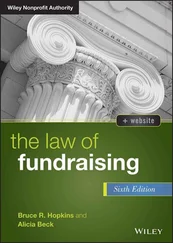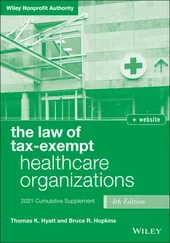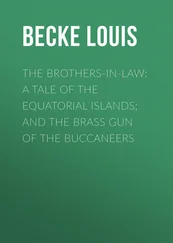Bruce R. Hopkins - The Tax Law of Charitable Giving
Здесь есть возможность читать онлайн «Bruce R. Hopkins - The Tax Law of Charitable Giving» — ознакомительный отрывок электронной книги совершенно бесплатно, а после прочтения отрывка купить полную версию. В некоторых случаях можно слушать аудио, скачать через торрент в формате fb2 и присутствует краткое содержание. Жанр: unrecognised, на английском языке. Описание произведения, (предисловие) а так же отзывы посетителей доступны на портале библиотеки ЛибКат.
- Название:The Tax Law of Charitable Giving
- Автор:
- Жанр:
- Год:неизвестен
- ISBN:нет данных
- Рейтинг книги:5 / 5. Голосов: 1
-
Избранное:Добавить в избранное
- Отзывы:
-
Ваша оценка:
- 100
- 1
- 2
- 3
- 4
- 5
The Tax Law of Charitable Giving: краткое содержание, описание и аннотация
Предлагаем к чтению аннотацию, описание, краткое содержание или предисловие (зависит от того, что написал сам автор книги «The Tax Law of Charitable Giving»). Если вы не нашли необходимую информацию о книге — напишите в комментариях, мы постараемся отыскать её.
The Tax Law of Charitable Giving — читать онлайн ознакомительный отрывок
Ниже представлен текст книги, разбитый по страницам. Система сохранения места последней прочитанной страницы, позволяет с удобством читать онлайн бесплатно книгу «The Tax Law of Charitable Giving», без необходимости каждый раз заново искать на чём Вы остановились. Поставьте закладку, и сможете в любой момент перейти на страницу, на которой закончили чтение.
Интервал:
Закладка:
The Economic Recovery Act of 1981 144 introduced an above-the-line charitable deduction—a charitable deduction for those who also utilized the standard deduction. This deduction expired in 1986. At the time of its enactment, it was controversial. For example, the then-Assistant Secretary of the Treasury for Tax Policy argued that this deduction “would go, in very large measure, to those who are already giving with respect to their existing gifts,” 145 providing them with a windfall gain, adding that the deduction “would result in a large revenue loss to the Treasury and little increased giving for the charities.” 146 Congress disagreed, “[b]elieving that allowing a charitable deduction to nonitemizers stimulates charitable giving, thereby providing more funds for worthwhile nonprofit organizations, many of which provide services that otherwise might have to be provided by the Federal government.” 147
The Deficit Reduction Act of 1984 148 increased the contribution limit on contributions of cash or ordinary income property to standard grantmaking private foundations. That legislation also introduced substantiation requirements, for claimed deductions of property in excess of $2,000, and penalties for overvaluation of property. The Technical and Miscellaneous Revenue Act of 1988 149 introduced rules by which a charitable contribution deduction could arise for payments providing a right to purchase athletic tickets (repealed in 2017) and for corporate gifts of inventory when used in particular instances.
In 1993, Congress passed the Omnibus Budget Reconciliation Act of 1993, 150 which revised the substantiation rule by reducing the value of the gift amount to $250 and introduced the $75 quid pro quo contribution rule. The Small Business Job Protection Act, adopted in 1996, 151 introduced the qualified appreciated stock rule for private foundations; that rule was made permanent on passage of the Tax and Trade Relief Extension Act of 1998. 152
The Pension Protection Act of 2006 153 brought a series of rules adversely impacting the extent of charitable contributions to certain supporting organizations and codified the concept of the donor-advised fund. This latter law change led to considerable and ongoing controversy about deductible charitable giving to vehicles where the money and property are not always put to immediate programmatic charitable use (as is also the case with, for example, endowment funds and charitable remainder trusts).
The Tax Cuts and Jobs Act, 154 enacted in 2017, had a minor direct impact on charitable giving and a major indirect impact on giving. As to its direct impact, the law was changed to increase the AGI limit for cash gifts by individuals to public charities from 50 percent to 60 percent. The indirect impact came in the form of enactment of provisions outside the ambit of the charitable deduction itself: lowering of individual tax rates, doubling of the standard deduction, and adjustments in the estate tax rules, which seem to be leading to a decline in charitable giving by individuals. 155
Although the federal income tax charitable contribution deduction has endured criticisms over the years, and continues to do so, the “charitable contribution tax incentive has continued vitality insofar as it encourages people to make charitable donations throughout the year.” 156
§ 1.6 CHARITABLE CONTRIBUTION DEDUCTION REFORM PROPOSALS
Leaving aside the inevitable tweaks, reform proposals concerning the federal income tax charitable contribution deduction for individuals are of three types: harmonizing the various percentage limitations on annual deductible giving (including minimizing the distinctions in eligible deductible giving between gifts to public charities and gifts to private foundations), making the charitable deduction more “equitable” (read: making it available to nonitemizers), and converting the deduction to (or establishing as an alternative to) a tax credit.
A report commissioned by Independent Sector 157 analyzed five tax policy proposals involving amounts of charitable giving and the number of households that contribute. These proposals are: a nonitemizer charitable deduction without limitations, a nonitemizer charitable deduction with a cap ($4,000 for single filers and $8,000 for married couples filing jointly), a nonitemizer charitable deduction with a floor (allowing a deduction of 50 percent of the value of charitable gifts under 1 percent of AGI and a full deduction for gifts over 1 percent of AGI), an enhanced nonitemizer charitable deduction providing a higher-value deduction for low- and middle-income households, and a nonrefundable charitable giving tax credit (25 percent).
The key findings of this report are:
The tax credit option has the largest positive impact on the amount that would be contributed ($37 billion) and the number of participating households (10.6 million). This proposal would reduce federal tax revenues by $33 billion.
The unlimited nonitemizer charitable deduction could generate up to $26 billion in additional charitable contributions and induce up to 7.3 million additional households to donate. The federal revenue loss would be as much as $22 billion.
The nonitemizer charitable deduction with a cap would generate fewer additional charitable dollars than is lost to the federal fisc.
The nonitemizer charitable deduction with a floor could bring in up to $7 billion more in charitable giving than is lost in federal revenue. This policy option would cause an increase in giving households by as many as 352 per million lost in federal revenue.
Subsequently, the Joint Economic Committee issued a similar report. 158 One of its reform options is to make the charitable deduction available to itemizers and nonitemizers. This approach, it is said, would increase charitable giving but decrease federal revenue. The JEC report cited a study showing that an above-the-line charitable deduction would have increased giving in 2018 by $21.5 billion and reduced that year's government revenue by $25.8 billion.
The report concludes this portion of its analysis with the observation that, “[w]hile an above-the-line deduction would treat lower-income donors more fairly with respect to their charitable giving, it would still result in their having a higher after-tax price of giving compared with today's itemizers.” 159 The report continues: “Because higher-income taxpayers generally have higher tax rates, the effective cost of their donations would still be lower.” 160
The JEC report also addresses the matter of a tax credit, noting that, for example, with a 25 percent charitable credit, a donor's tax liability would be reduced by 25 percent of the value of all gifts, regardless of the tax rates or the size of the gifts. However, the report adds that, unless made refundable, this credit would apply only to the extent the donor has tax liability.
The same study estimated that replacing the charitable deduction with a 25 percent nonrefundable tax credit would have a greater positive impact on charitable giving and a greater reduction in federal revenue than the above-the-line deduction: it would have increased giving in 2018 by $23.3 billion and reduced revenue by $31.1 billion.
The JEC report stated that a credit approach has also been estimated to have a larger positive effect on the number of new donors compared to an above-the-line deduction. Another study cited by the committee, of various ways to penalize giving less among nonitemizers while leaving the current deduction unchanged, found that a 25 percent tax credit, of the options considered, “would most increase the number of households giving, both overall and at all income levels except the top 1 percent.” 161
As to the percentage limitations, a good case can be made that the various existing percentages (from 20 to 60 percent) are confusing and unnecessary, and need to be blended and trimmed.
Читать дальшеИнтервал:
Закладка:
Похожие книги на «The Tax Law of Charitable Giving»
Представляем Вашему вниманию похожие книги на «The Tax Law of Charitable Giving» списком для выбора. Мы отобрали схожую по названию и смыслу литературу в надежде предоставить читателям больше вариантов отыскать новые, интересные, ещё непрочитанные произведения.
Обсуждение, отзывы о книге «The Tax Law of Charitable Giving» и просто собственные мнения читателей. Оставьте ваши комментарии, напишите, что Вы думаете о произведении, его смысле или главных героях. Укажите что конкретно понравилось, а что нет, и почему Вы так считаете.












